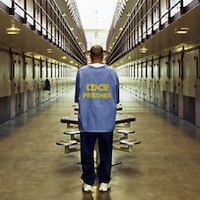Most 3-Strike Inmates Are Addicts, but Are No Greater Threat than Non-Addicts
 Soledad State Prison (photo: Todd Hido for the New York Times)
Soledad State Prison (photo: Todd Hido for the New York Times)
Almost three-quarters of inmates in California prisons for three-strike convictions are addicts, compared to 48% in the general prison population, according to public record data crunched by the San Francisco Chronicle and California Watch. Seventy-six percent of prisoners whose third-strike was for burglary are likely to have substance abuse issues.
Voters, who are about to decide whether to make it easier for non-violent three-strikers to gain freedom, can weigh that knowledge against the publications’ finding that bucked the conventional wisdom that those addicted inmates serve as agreater threat to public safety.
Using measurements of risk factors and psychological makeups, social scientists and criminologists have developed tools for assessing the extent to which an inmate exhibits high-risk “criminal thinking,” and they have determined that these felons with substance abuse problems don’t pose any greater threat to the public than non-three-strike prisoners.
So far, a large majority of voters favor passing Proposition 36 at the polls on November 6. The USC Dornsife/Los Angeles Times poll a week ago had the measure ahead 66%-20%, with 14% undecided. A couple of the prop’s provisions would impose life sentences in three-strikes cases only when the crime is serious or violent and allow a three-striker whose last conviction wasn’t serious or violent to get a new judicial review.
Around 3,000 of the state’s 8,800 third-striker prisoners, imprisoned since Proposition 184 passed in 1994, would be eligible to petition the court for review if Prop. 36 passes.
As of May, there were about 137,000 inmates in the California prison system, but that number was shrinking as the state, under court order to reduce its prison population quickly, embarked upon a reorganization that shifted thousands of inmates to local jails. Prop. 36 is viewed as another way to reduce the number of incarcerated and save some money.
The state Legislative Analyst’s Office estimated that Proposition 36 could save the state $70 million to $90 million a year out of a $9 billion Department of Corrections and Rehabilitation budget.
–Ken Broder
To Learn More:
Majority of Third-Strike Inmates Are Addicts, Records Show (by Marisa Lagos and Ryan Gabrielson, Center for Investigative Reporting)
Second and Third Striker Felons in the Adult Institution Population (Department of Corrections and Rehabilitation) (pdf)
Inmates Sentenced Under the Three Strikes Law and a Small Number of Inmates Receiving Specialty Health Care Represent Significant Costs (California State Auditor) (pdf)
Proposition 36 (Legislative Analyst’s Office)
- Top Stories
- Controversies
- Where is the Money Going?
- California and the Nation
- Appointments and Resignations
- Unusual News
- Latest News
- California Forbids U.S. Immigration Agents from Pretending to be Police
- California Lawmakers Urged to Strip “Self-Dealing” Tax Board of Its Duties
- Big Oil’s Grip on California
- Santa Cruz Police See Homeland Security Betrayal in Use of Gang Roundup as Cover for Immigration Raid
- Oil Companies Face Deadline to Stop Polluting California Groundwater




